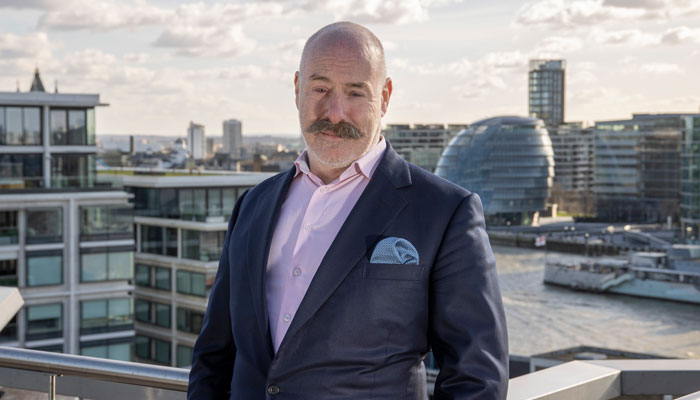We must demystify the different workstyles that have emerged from the pandemic

By Giles Fuchs, CEO of leading serviced office provide Office Space in Town (OSiT)
While many of us have spent the last two years working more flexibly than we ever imagined, in that time it has proven difficult for business leaders to agree on whether this development will be for better or worse. When the Omicron variant prompted the return of work-from-home advice, for instance, it was simultaneously hailed as the right decision and derided as “absurd” as businesses tried to return to normal.1 How can it have been both?
Well, conflicting views on post-pandemic work strategies are bound to emerge when businesses of various sizes and sectors are asked to give their opinion and there are about as many solutions as there are businesses in the UK. Decision-makers must understand their options in order to evaluate them effectively.
With that in mind, it’s worth examining some of the more popular and innovative work strategies to have sprung up in the wake of the pandemic, and discussing their respective benefits for businesses and their staff.
Hybrid working
Surely the most familiar work strategy to have been popularised by the pandemic, hybrid working now seems ubiquitous, with more than 40% of employers planning to adopt an approach by 2023 whereby workers divide their time between home and the office.2
But while the concept is relatively simple, hybrid working can be a high-risk strategy is businesses fail to get the balance right. Too much time spent working from home has been found to erode workers’ wellbeing, with research conducted in lockdown by Office Space in Town (OSiT) revealing that more than half of home workers suffered from mental health issues such as anxiety, depression, and stress.
Moreover, working remotely too often has been found to undermine businesses’ productivity. This is highlighted most starkly in the 20% drop in output-per-worker at the beginning of the pandemic,3 but in the long term too, insufficient time in the office – crucially, with colleagues and mentors – will stymie the creativity and career development that keep workers motivated and businesses competitive.
Striking the right balance is critical. Though often equated with flexible working, hybrid work strategies that inhibit workers in these ways will in fact make businesses more brittle and their employees more at risk of burnout.
Activity-based working
Aiming to deliver the genuine flexibility that theoretically comes with choosing where to work, some businesses have implemented activity-based working, which provides employees with a range of settings according to what they are doing at a particular time.
Offering a choice of locations at any one time brings its own challenges, of course, which helps explain why businesses are increasingly outsourcing their space management to experts who can provide the service they require. These office providers must offer serviced space such as breakout areas, entertaining spaces, and recording studios are available, to accommodate a broad range of activities including team brainstorms, client meetings, and even podcast production!
Another challenge is dealing with the peaks and troughs in occupancy that come with having different spaces for different activities; some will invariably be used more than others. From a sustainability perspective, managing energy usage (particularly across multiple sites) is something that activity-based offices will all have to grapple with.
“SEMOB” working
A solution can be found by taking the idea of space as a service a step further. Indeed, the office cannot survive simply as a work “space”; what makes it so valuable is the opportunities it provides that workers cannot get anywhere else. So, what if the office really could be all things to all people? This is the question that SEMOB aims to answer.
Service-Enhanced Multi-Occupancy Buildings house a range of facilities under one roof and, importantly, a single environmental control system. This centralisation can have huge environmental benefits, particularly if it leverages data-driven insights, enabling smart systems to learn energy usage patterns and limit output accordingly. So, no heating, for example, wasted on empty offices.
Another defining feature of SEMOB’s suite of services is its recognition of users not only as workers, but also as people. At OSiT’s Monument office, for instance, we have an onsite hair and nail stylist who provides services on both a drop-in and an appointment basis. Such is the demand for their services that they are a full-time fixture at OSiT Monument!
This is all part of the office’s evolution to something that is much more than just a workspace. People travel into city centres for more than just work, so offices that cater to all of these priorities will be more popular with both employees and businesses. In the long term, employees will not settle for anything less.
So what does this mean for FMs?
If business leaders are increasingly waking up to the importance of tailoring work strategies to the needs of workers themselves, then facilities managers should be prepared for the onus of delivery to fall on them. Of all the workstyles to have emerged in the wake of the pandemic, what unites them is an expansion in what the office has to offer, thereby broadening the remit of facilities managers beyond its traditional boundaries. With the office providers facing fraught competition to drive revenues, the most successful facilities managers will be those who embrace these new responsibilities and make their spaces more marketable to prospective clients.
Add your comment

- Administration 3
- Building Design, Planning, Development 1
- Catering 1
- Construction 43
- Contracts, Projects, Bids 21
- Energy Management 100
- Engineering, Maintenance 600
- Estates, Property 27
- Events 1
- Facilities Management (main) 275
- Hard Services 60
- Health & Safety 2
- HVAC 216
- Management 2
- M&E 223
- Operations 81
- Procurement 19
- Soft Services 4


